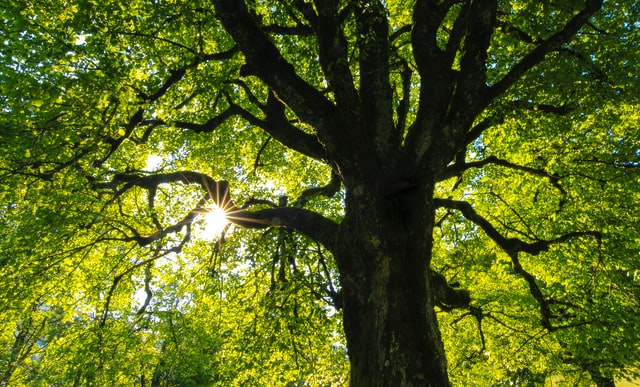What Makes A Tree A Tree
People often asked the question: what makes a tree a tree? The answer is not as simple as it sounds.
The study of the forty genomes of sequenced trees did not reveal genetic characteristics unique to these organisms. None of the genes that make up their genetic heritage can account for their particular biological properties.
Some of course would argue and tell you that trees are capable of living for centuries, that they make wood and that they can grow to large sizes. Trees have appeared in many plant lines and are distinguished from other plants mainly by their durability, their incredible ability to pass through the centuries. We all have in mind the magnificent redwoods or the millennia-old Aspen.
A child would tell you that a tree is a tree because it makes wood. That’s right. The “real trees” make bark and wood using a layer of particular cells, the cambium. Year after year, the stem cells that make up this fine structure generate the wood cells whose walls are formed by microfibers interspersed with cellulose and lignin. These cells die quickly, empty and their rigid walls form the wood rings that accumulate in the heart of the tree. Making wood, however, is not the preserve of trees; herbs such as lavender and sage accumulate wood in their stems.
What about “fake trees”? Palms and banana trees look very like trees; in any case, they have the majestic port, but they are giant herbs. They have no trunk, but a stem filled with marrow or long fibers (the stripe), and their fins replace the branches.
One thing is certain, being a tree gives a considerable advantage over herbaceous plants confined to the ground: dominate and be closer to the sun to catch the light.
Darwin’s legacy
Since Aristotle, trees, like other plants, have been seen as living organisms, but passive, just able to grow, breathe, and feed. The Greek philosopher attributed them to a “vegetative soul”, inferior to the “sensitive soul” of animals and far from the “intellective soul” of man.
This anthropocentric view of the world has been relayed over the centuries by Western philosophers and theologians. It was not until the work initiated by the English naturalist paleontologist Charles Darwin (1809-1882) and his son Francis (1848-1925) that this vision of the plant world changed significantly.
English scientists then demonstrated that plants possessed sensory abilities that allowed them to perceive the world around them and to interact with that environment. They react to external disturbances in order to adapt to them and thus compensate for their forced immobility.
In 1880, the Darwins published The Power of Movement in Plants. Their experiments show, for example, that the beetle (this organ forming a protective sheath around emerging grass shoots) is able to move towards a light source.
This ability to orient itself according to the source of light, called phototropism, is only one of the many mechanisms invented by plants to feel and communicate with the environment, but also with other living beings.
Subsequent research has confirmed that plants perceive their environment and adapt to it by their movements: they straighten their stems tilted by the wind, move away from their neighbors, move towards the light.
Like animals, they therefore possess several senses (vision, smell, touch), which have the distinction of being distributed over the entire surface of their body, and not located in specialized organs as in animals. At the molecular level, the receptors and signal cascades triggered by the perception of these external stimuli are fundamentally identical in animals, plants, and fungi.
Plants are also able to emit stress or satiety signals, and to forge bonds with fungi and symbiotic soil bacteria. They are therefore endowed with sensitivity, that is, able to feel the changes in the environment and react to them. In biology, this property is defined as the ability of a “receiver” (actually an organism, cell, or molecule) to receive stimulation of physical or biological origin, and to respond to them by mobilizing the energy of their metabolism.
Prime Tree Service Company, located in Lodi, specializing in the trimming, modeling, root removal, tree cutting, tree removal, tree planting, and professional garden design of all kinds of trees Refurbished.
Prime Tree Service Company can help you create a beautiful, healthy, and safe outdoor living environment. In addition, cutting trees, moving trees, planting trees and professional garden design will help protect the value of your property.
Contact us today: (209) 297-3338
Continue reading about “How Trees Can make you Happier?“

